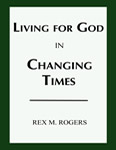Halloween is strange in more ways than one. It’s a holiday, so to speak, that started Good, became Bad, and has now turned increasingly Ugly. Yet some of the Good remains.
The Good
Halloween, insofar as it’s about children, innocence, harmless fantasy, candy, and fun is a good thing. That’s the Halloween I grew up with and that’s the Halloween our children experienced. It’s costumes and laughter, silliness, and excitement about how much chocolate you bagged.
Good Halloween is parents, grandparents, or older siblings or friends or relatives standing at the end of driveways waiting for unrecognizable, sort of, children to return. It’s telling them not to run on uneven sidewalks with masks on their face, inevitably being ignored, and inevitably picking someone up, along with their spilled candy. I’ve done this at least a hundred times.
Good Halloween is pumpkin carving, candles, and low-level scary things like black cats in the dark, sheet-ghosts, and big dark Victorian houses.
The annual Pumpkin Carving Night my wife initiated is now about 15 years old, at least. Ten, fifteen, twenty family members and friends show up. We’ve watched girlfriends come and go and a couple of them come and never go—now one of them brings along our baby grandson. It’s a great night of frivolous frivolity. And in a few words, it’s just “good clean fun.” Or maybe not so clean because it produces tons of pumpkin innards.
Halloween can be Good.
The Bad
Halloween has been a suspect holiday from a Christian point of view for a long time. It began, though, as “Holy” or “Hallow’s Eve,” (Halloween) the evening before a church-established holiday called “All Saints' Day,” on which martyrs were remembered. In the early centuries of the church, so many people were martyred for their faith that a special holiday was needed to honor them.
In the Eighth Century, things took a wrong turn. Hallow’s Eve began to be associated with pagan beliefs, including the Celtic festival Samhain. On this day people believed the dead came back and walked among the living. It wasn’t long before people engaged this day by wearing masks, dressing as the dead, introducing bloody sacrifices of animals or even human beings, and worshipping or otherwise practicing the occult, along with attempts to contact the dead, evil spirits, and the Devil himself. Superstitions ran amok.
Costumes became symbols of ghosts and goblins. “Trick or Treat” originated in the belief dead souls were hungry, so food was put out to appease them, or they might respond angrily…with a trick. Jack-o-lanterns were born around Druid religious fires built to ward off evil spirits. People carried home some of the “sacred” fire in hollow vegetables.
It’s too bad we’ve lost the sense of respect represented in All Saints or All Hallow’s Day. Thinking about the martyrs of the faith would be a meaningful reminder in an age that believes nothing significant has gone before. And by the way, it’s of more than passing historical interest that Martin Luther chose October 31, 1517 as the day to post his “95 Theses” on the Wittenberg Door.
Halloween can be Bad.
The Ugly
To say things have gone from bad to worse for Halloween in the past, say, twenty-five years doesn’t cut it. It’s gone from bad to ugly.
Urban centers are especially vulnerable, but virtually every region of the country has experienced the horror of children discovering razor blades embedded in apples or poison in candy. Who could do this? Yet it happens.
Cities like Detroit have been forced to introduce curfews or even suspend Halloween events in an attempt to control burning on Devil’s Night or Fright Night. The New Jersey Department of Education has designated the third week of October “Violence and Vandalism Week,” and conducts awareness programs to warn parents. School districts across the country have cancelled Halloween festivities in the name of safety for children.
Meanwhile, Halloween in the marketplace has become a celebration of the ghoulishness, vulgarity, gore, slashers, sensuality even for young children, mutilation, and gaudy Mardi Gras-like orgy. In neighborhoods, malicious pranks have increased, as have juvenile delinquency and property destruction. No longer do a group of boys coax a cow onto the school rooftop. Now they break windows, set fire to laboratories, or assault passers-by, all in the name of Halloween.
Halloween can be Ugly.
So What Now?
Has Halloween become an increasingly threatening nemesis of our children? Should we ignore or maybe resist it?
Many Christian families take a “Total Withdrawal” approach and no longer observe Halloween other than perhaps via church-sponsored Halloween-alternative events. Other Christian families opt for a “Selective Participation” approach, looking upon Halloween like everything else, as a matter for spiritual discernment. Still others abandon Halloween because they don't like the high sugar content and low nutrition value of typical Halloween candy.
Our family applied the Selective Participation approach, and I think it worked well. I'm not against all Halloween celebrations and certainly not against children enjoying dress-up fantasy and candy. Nor am I against some scary entertainment, though horror in general is not my thing and I admire Stephen King more as an author than as horror-king. Some of Halloween is fun, but I'm usually glad each year when the day has come and gone because much in the media run-up is grotesque theatre of the absurd.
Halloween is part of cultural change. It requires us to apply our faith in a way that "tests the spirits to see whether they are from God" (1 John 4:1). Only in this way will we be able to maintain a biblical view of the world in the time in which God has placed us.
Talk about all this with your children in light of God's Word. Make Halloween, the Good, the Bad, and the Ugly, into something that's positive for your kids. Make Halloween a teaching moment.
Halloween is now the second-highest money making holiday of the year. It’s not going to go away. So we have to discern what’s good and enjoy. Teach your kids, line upon line, precept upon precept.
And oh, our annual Pumpkin Carving Night is tonight.
© Rex M. Rogers – All Rights Reserved, 2010
*This blog may be reproduced in whole or in part with a full attribution statement. Contact Dr. Rogers or read more commentary on current issues and events at www.rexmrogers.com or follow Dr. Rogers at www.twitter.com/rexmrogers.


